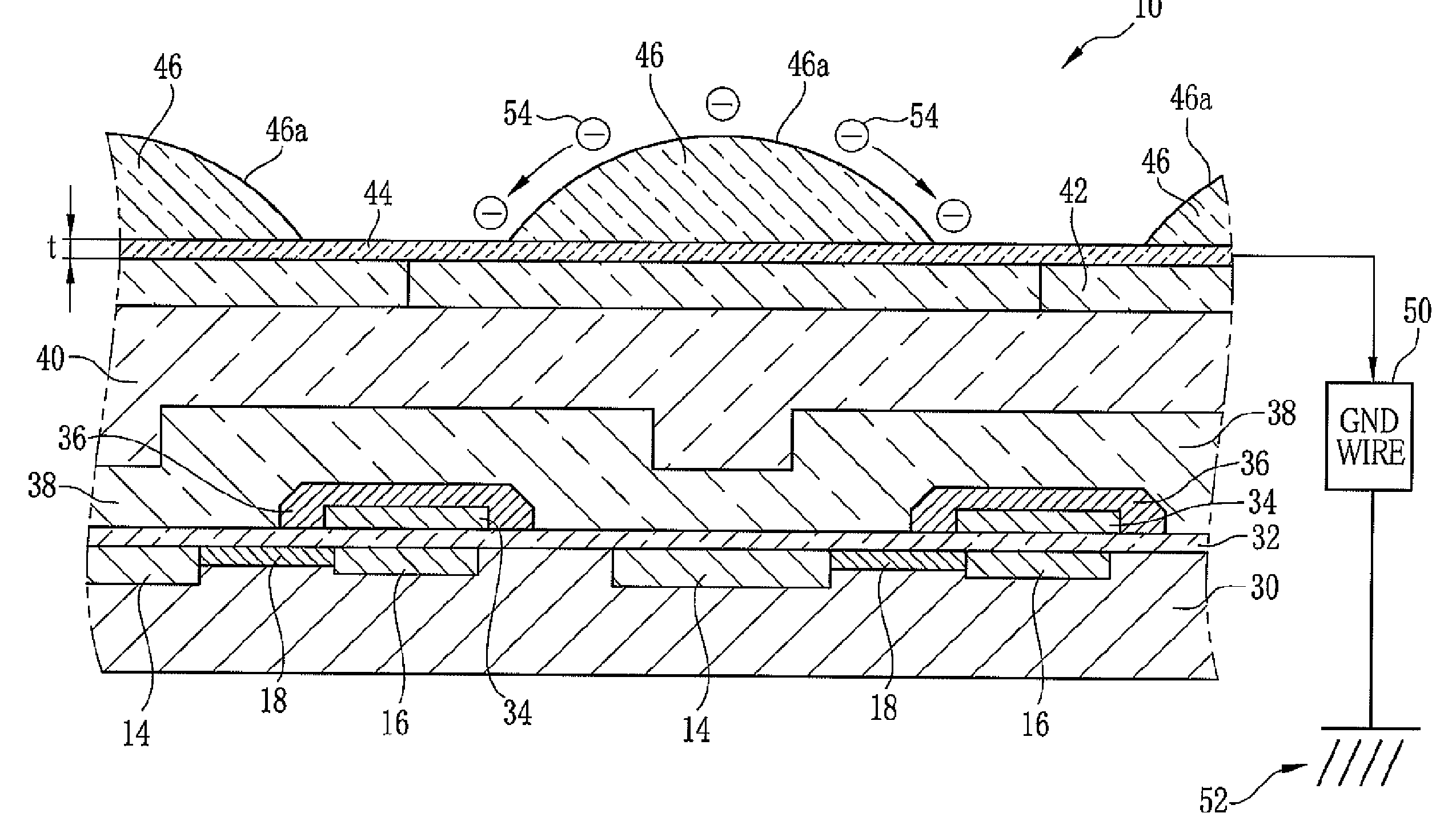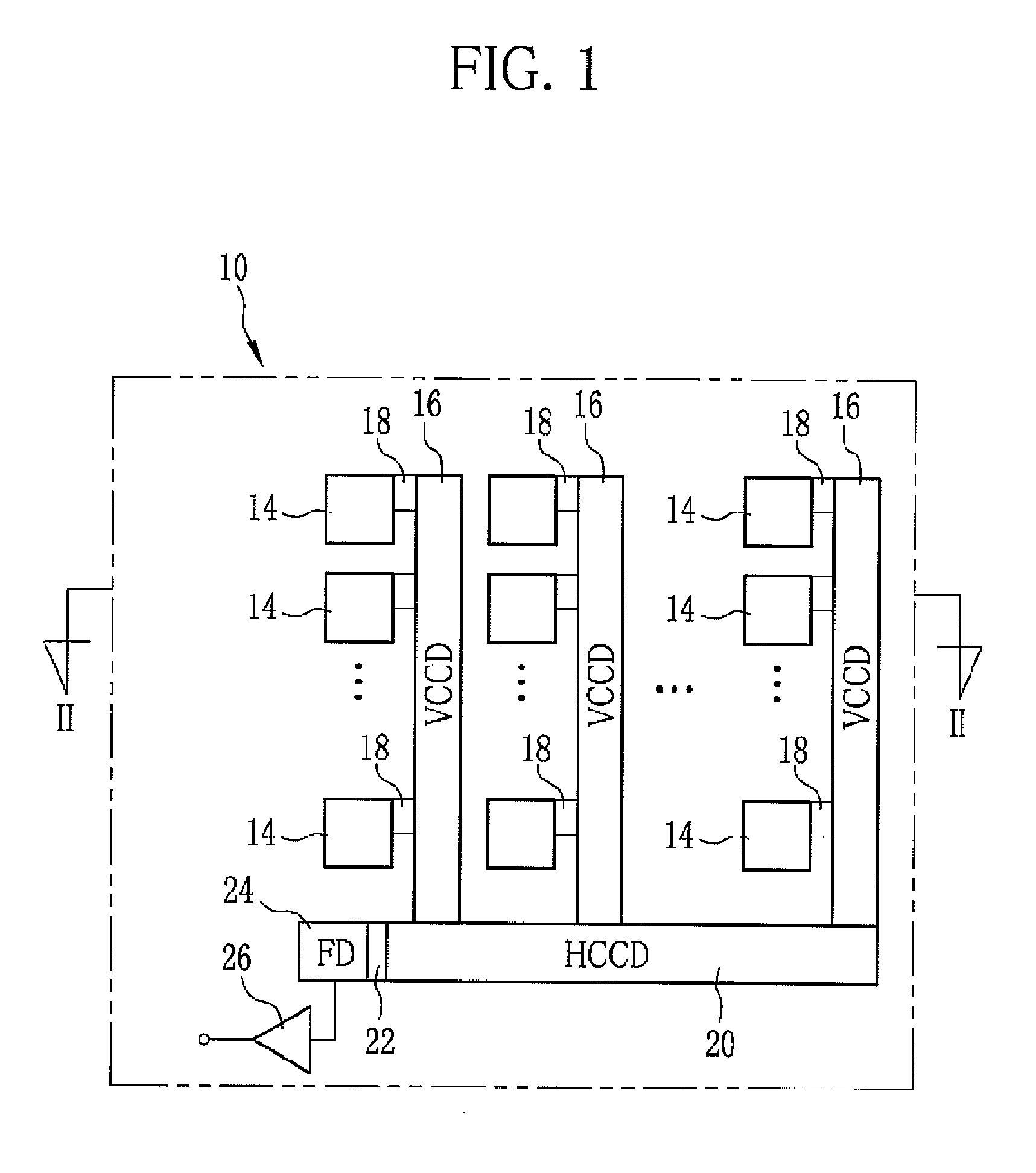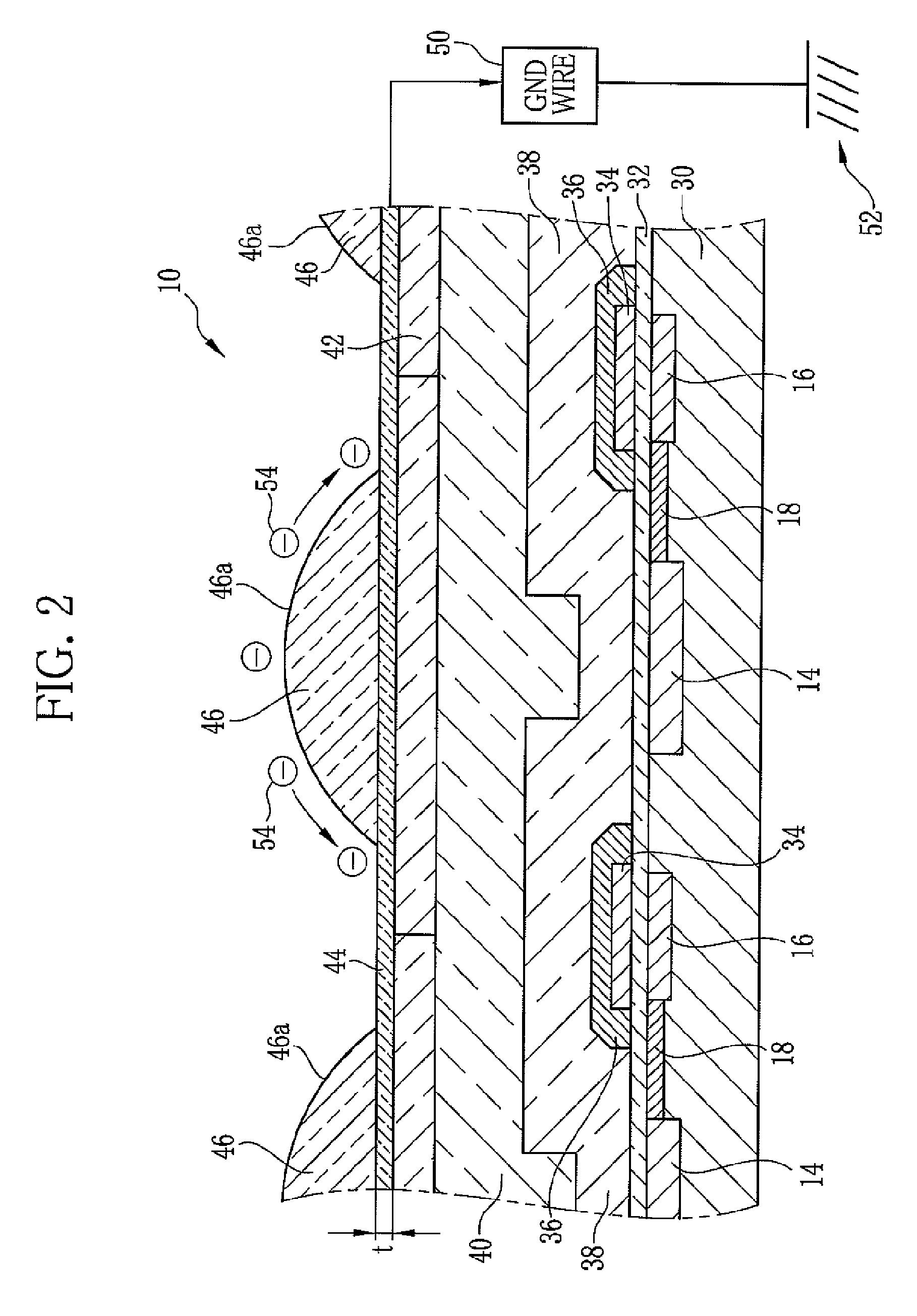Solid state imaging device and manufacturing method thereof
a solid-state imaging and manufacturing method technology, applied in solid-state devices, color televisions, television systems, etc., can solve the problems of attracting foreign matter to the lens surface, difficult to remove foreign matter once it is adsorption, and small bumps, so as to prevent static charge buildup on the micro-lens surface, prevent quality loss and yield loss, and prevent static charge buildup
- Summary
- Abstract
- Description
- Claims
- Application Information
AI Technical Summary
Benefits of technology
Problems solved by technology
Method used
Image
Examples
Embodiment Construction
[0028]Referring to FIG. 1, a solid state imaging device 10 is an interline transfer CCD which includes plural photodiodes (light receiving elements) 14 in two dimensional matrix arrangement, vertical transfer CCDs (VCCDs) 16 along each column of the photodiodes 14, transfer gates (TG) 18 connecting each photodiode 14 to the VCCD 16, a horizontal transfer CCD (HCCD) 20 connected to output terminals of all the VCCDs 16, an output gate (OG) 22 and a floating diffusion (FD) 24 at an output terminal of the HCCD 20, and a source-follower amplifier circuit 26 connected to the FD 24.
[0029]The photodiode 14 converts incident light into an electrical signal, and stores a signal charge equivalent to an amount of the incident light. The signal charge of the photodiode 14 is then transferred through the TG 18 to the VCCD 16. In the VCCD 16, the signal charge is shifted, one line at a time, to the HCCD 20. The HCCD 20 horizontally transfers the signal charges of the same row (horizontal line) to ...
PUM
 Login to View More
Login to View More Abstract
Description
Claims
Application Information
 Login to View More
Login to View More - R&D
- Intellectual Property
- Life Sciences
- Materials
- Tech Scout
- Unparalleled Data Quality
- Higher Quality Content
- 60% Fewer Hallucinations
Browse by: Latest US Patents, China's latest patents, Technical Efficacy Thesaurus, Application Domain, Technology Topic, Popular Technical Reports.
© 2025 PatSnap. All rights reserved.Legal|Privacy policy|Modern Slavery Act Transparency Statement|Sitemap|About US| Contact US: help@patsnap.com



